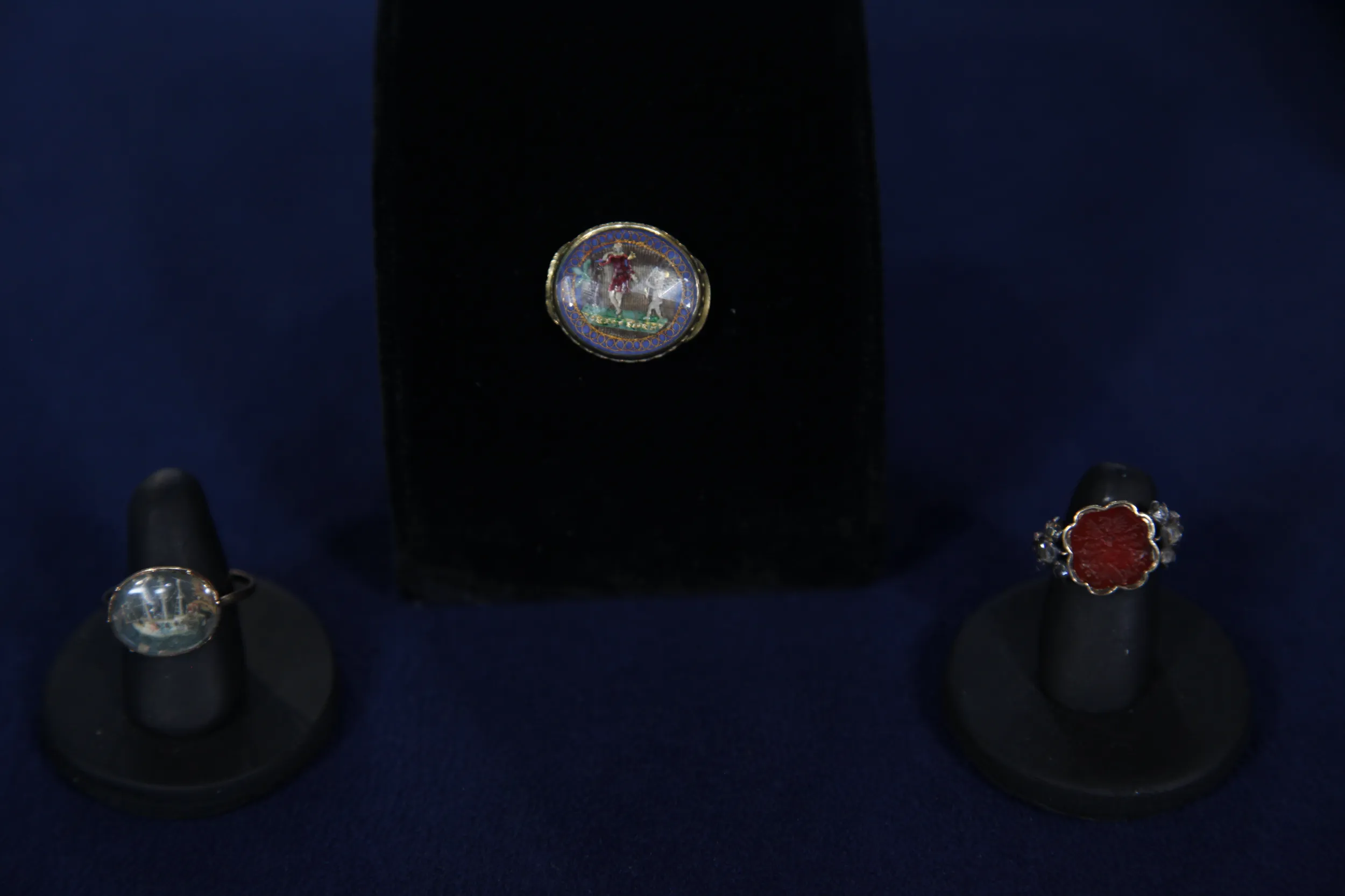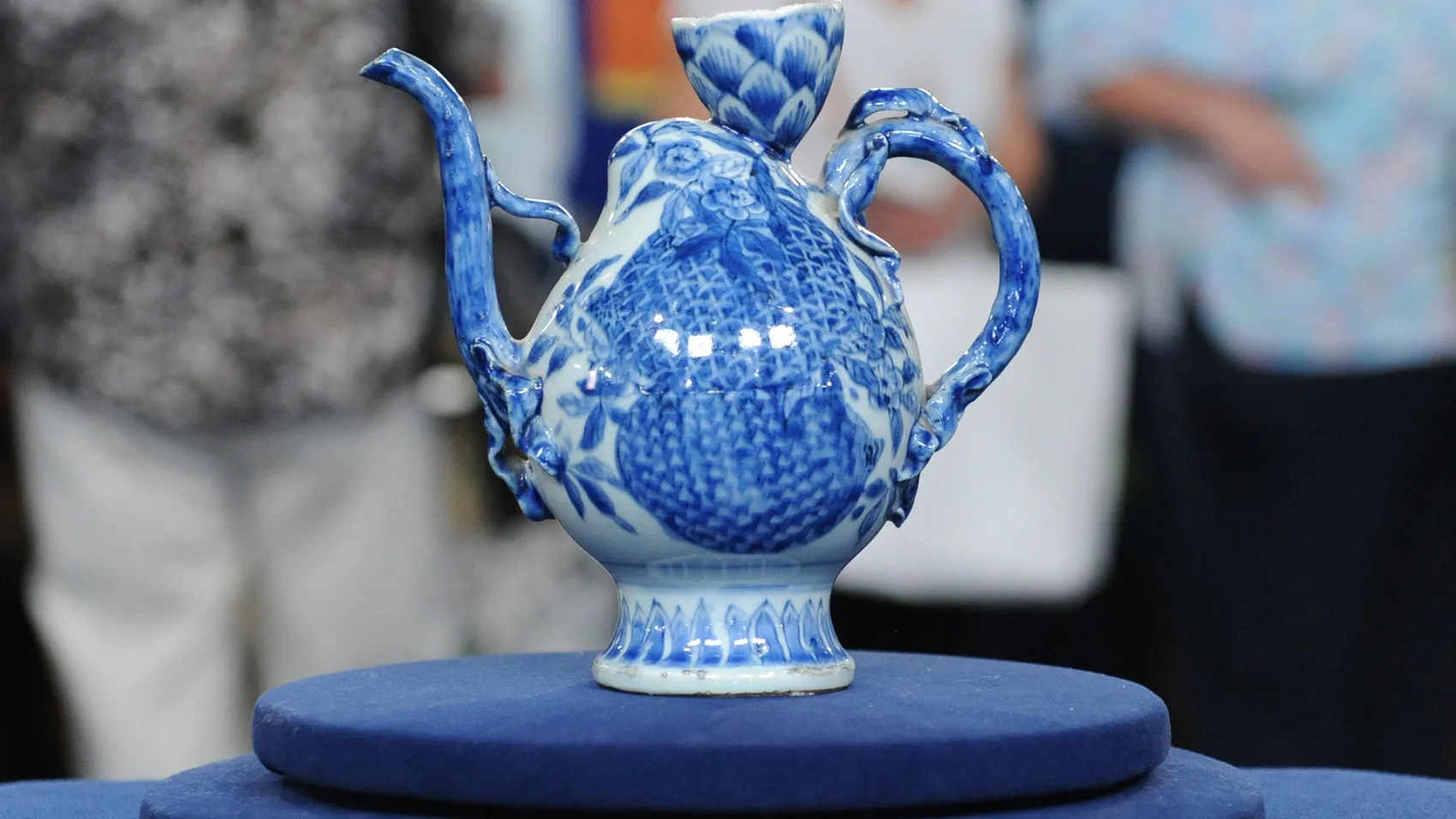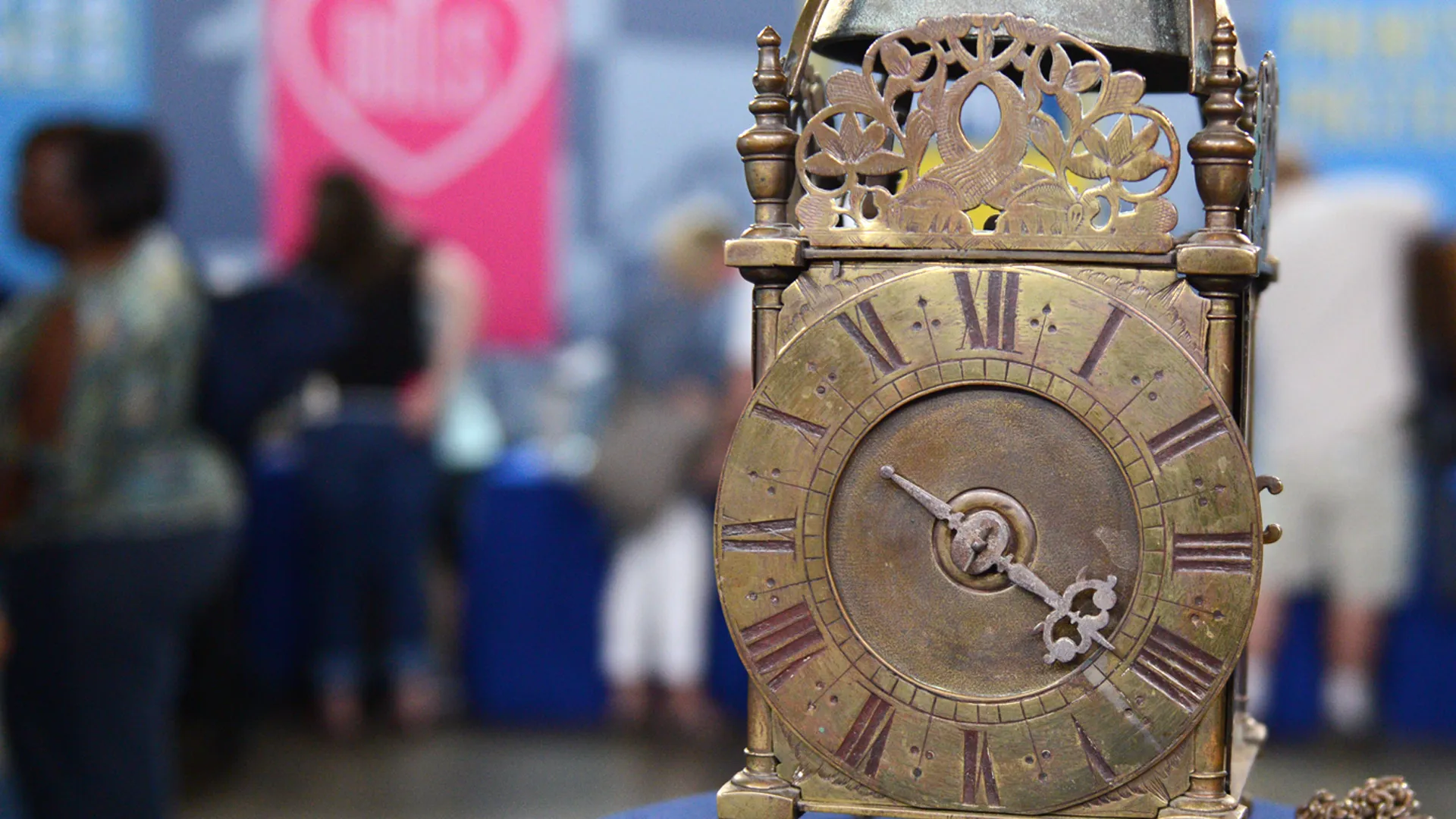1671 Schagen Map & Ortelius Map, ca. 1590
GUEST: So my husband and I were doing some shopping up in Spokane, Washington, and decided to pop into a thrift store. And this map, it was kind of tucked away in the back of the store, and it immediately caught my eye because I had never seen California depicted as an island before.
APPRAISER: Right, and we can see that right here. California is shown as a separate island.
GUEST: Yes. And so I just liked the uniqueness of it, I liked the vibrant colors, so I bought it on a whim for $13. My husband thought I was a little crazy at the time, because he did not think it was a legitimate piece. So we brought it home, popped it out of the frame, and when we saw it was at least printed on real paper, went back and bought its mates.
APPRAISER: Now, what do you mean, you saw that it was printed on real paper?
GUEST: Well, it just seemed to have the fine texture and the grains that we would expect, and not just a print.
APPRAISER: Assuming they're originals...
GUEST: Assuming.
APPRAISER: Or if they are originals, what do you know about them?
GUEST: So the one of the Americas, I believe the cartographer is Schagen, if I'm saying that correctly, and I believe he worked in Amsterdam. And so if this is legitimate, I believe it came from an atlas that dates back to 1671. This one I know less about. I think the cartographer is Ortelius, and that it might pre-date the one of the Americas.
APPRAISER: I recognize the images. They're actually fairly famous maps. So what do you look at? You look at paper, but they're framed, okay, so that's hard. So what do you look at? You look at a couple of things. One is, you look at plate marks. There is a plate mark around each image, and that's a very close little edge right around the image, and that's from the copper plate.
GUEST: Okay.
APPRAISER: And one other thing is, on original maps is, the plate mark is very close to the image, because they didn't waste metal. On reproductions, the plate mark is usually further away, so that's a clue.
GUEST: Okay.
APPRAISER: These had the close plate mark-- that's good. Then you look at the centerfold, because they should've been issued in atlases. You look here, and you can kind of see a centerfold. The problem is that if you have a reproduction, you take a picture of a map with a centerfold, they're going to print the image of the centerfold. So let's look at it. And we'll just slide it right out here. And then we'll put it back up. Now, what you looked at was the texture of the paper and unfortunately, it's been taped all around.
GUEST: Yes.
APPRAISER: So you can't lift it up and hold it up to light, which is what you really want to do. But you're right-- you can see there's kind of a texture to it. Also, if you look at it closely, you can really see that is a centerfold. It's an original.
GUEST: That's fantastic.
APPRAISER: So this is an original. And you were right-- it's from 1671. That was when they first came out. They issued them over a number, a period of years. The color, which you like, is later.
GUEST: Okay.
APPRAISER: This is not original color-- it's just not appropriate. I know that.
GUEST: Okay.
APPRAISER: Very good map. Do you have any idea on value? When I saw a black-and-white copy, I believe it went for $1,300 at an auction house. Even if the color's not original, it does add value.
GUEST: Fantastic.
APPRAISER: You're probably looking at a map, if you remove the tape and fix it up, that's going to be worth about $1,600.
GUEST: Wow.
APPRAISER: In a retail environment, this map, in this condition, which does have problems, is probably worth about $1,200.
GUEST: Okay.
APPRAISER: Now, the Ortelius.
GUEST: Yes.
APPRAISER: That is also probably added color-- it's not appropriate.
GUEST: Okay.
APPRAISER: Ortelius, it is earlier. It was originally issued in 1570, but the earlier editions have a bump on South America. This particular one would be 16th-century. If you look at the back and you look at the text of the language, you could pick the exact date, but it's going to be between 1589 and 1590. You can also see along the top, it's got a little more paper exposed. You can see the chain lines, which indicates it is 16th-century paper. Abraham Ortelius, father of modern cartography, one of the great mapmakers. That's one of his great maps. And assuming it's in that same condition, it's probably worth about maybe $5,500 to $6,000.
GUEST: Wow.
APPRAISER: If you fix it up, it's going to be worth maybe $7,500.
GUEST: Fantastic-- thank you.
APPRAISER: And you paid how much for it?
GUEST: $26 total.
APPRAISER: For the two of them?
GUEST: For the two. That is just fantastic news. So glad we decided to go shopping that day.

$6,700 - $7,200 Retail
Photos
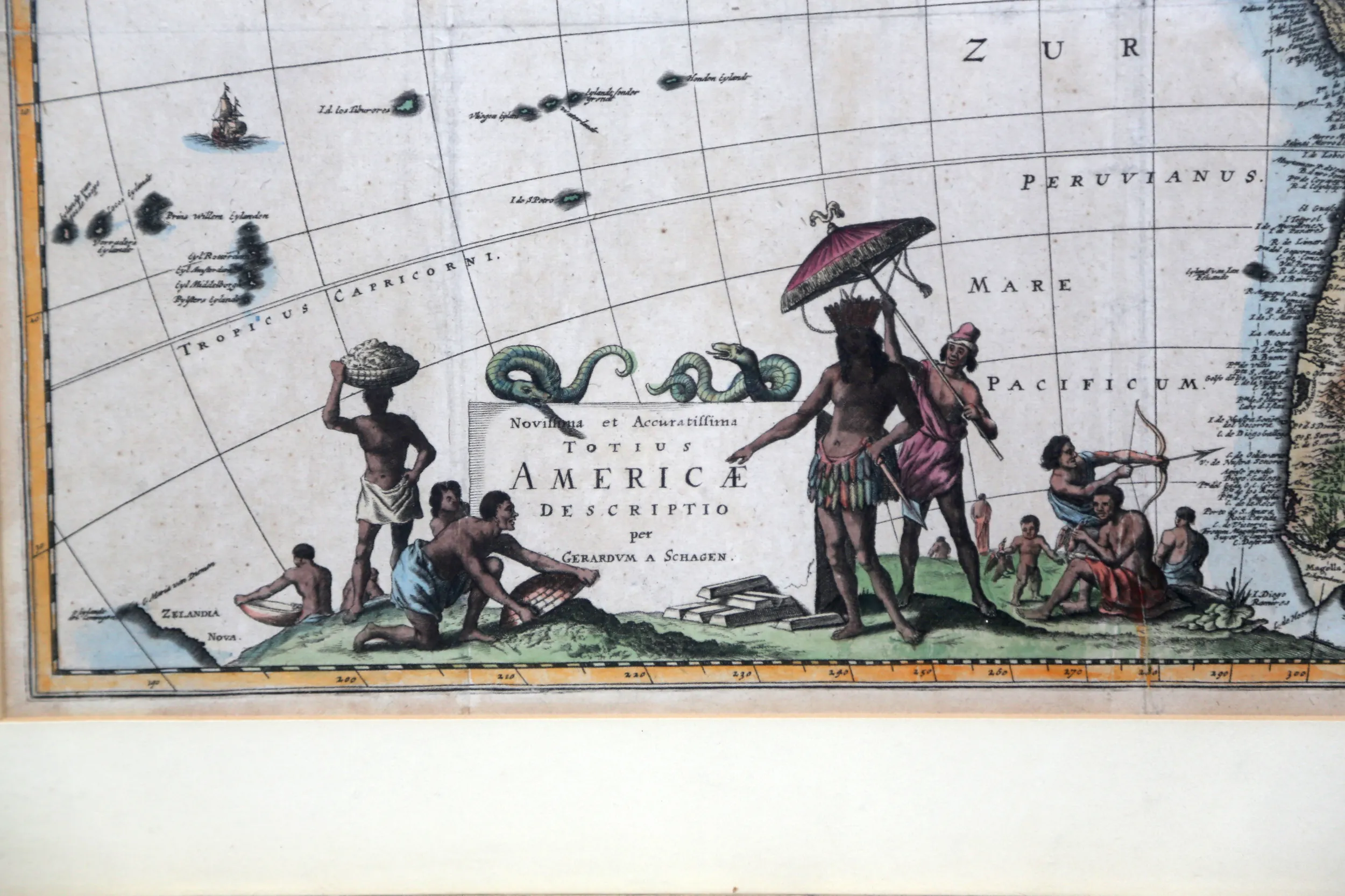
Featured In
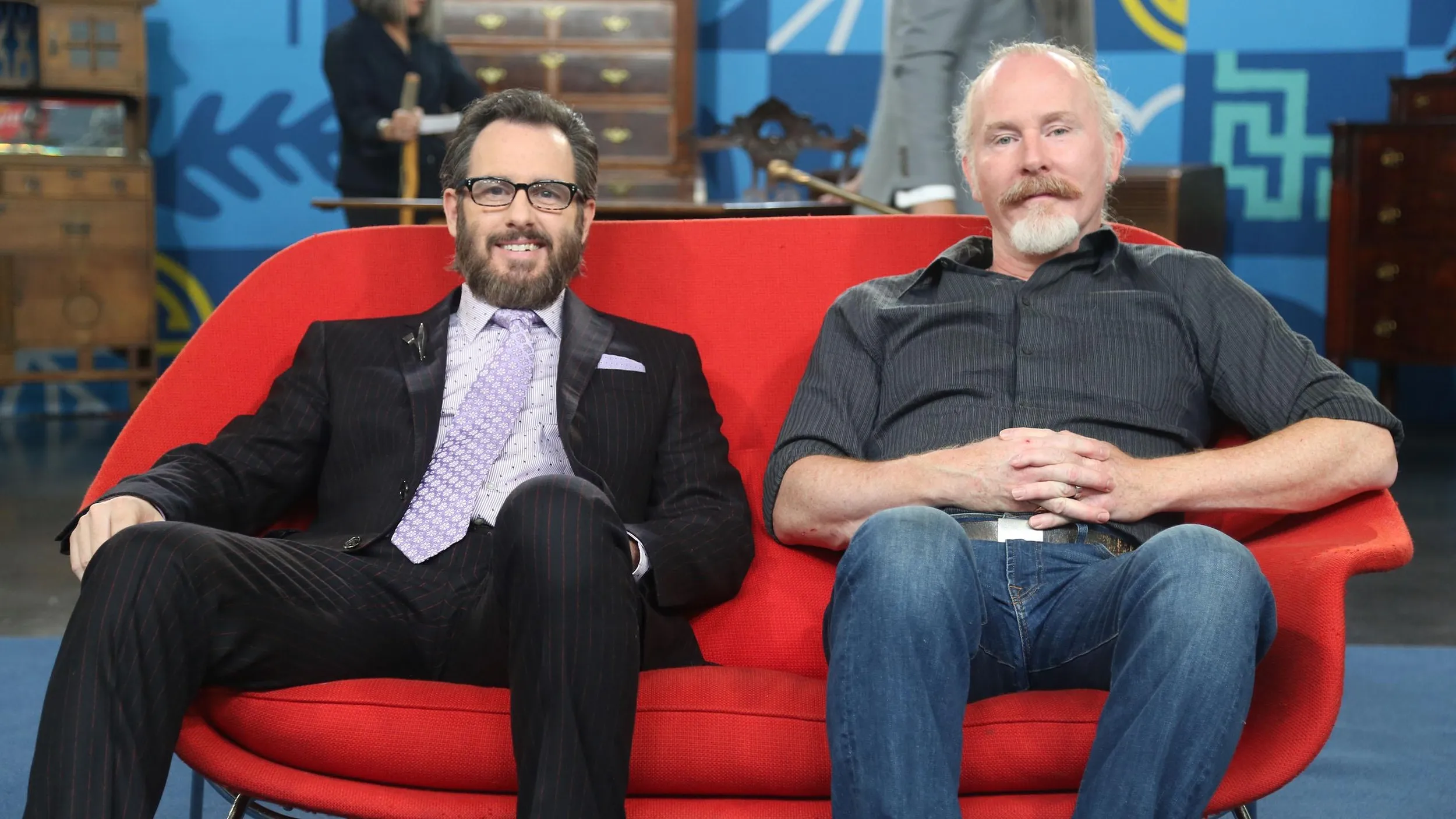
episode
Portland, Hour 1
"Heller in Pink Tights" credits, a Saarinen settee, and a Lincoln-inscribed photograph!
17th Century
Understanding Our Appraisals
Placeholder
